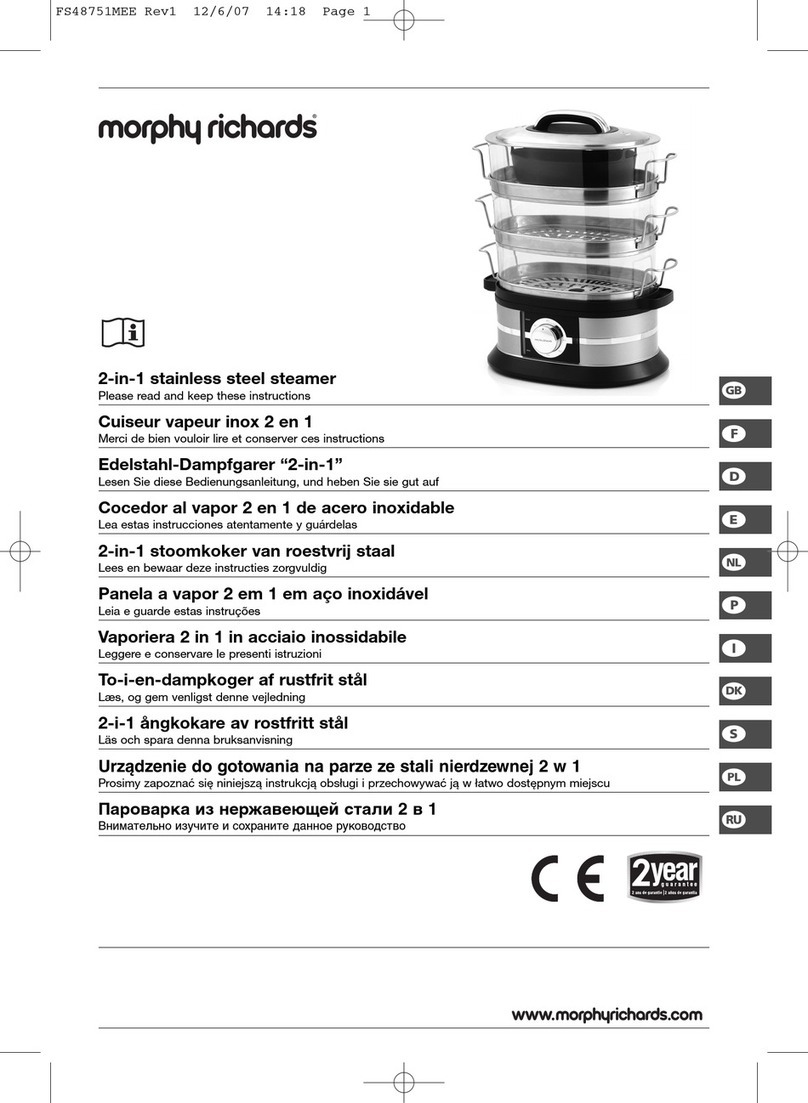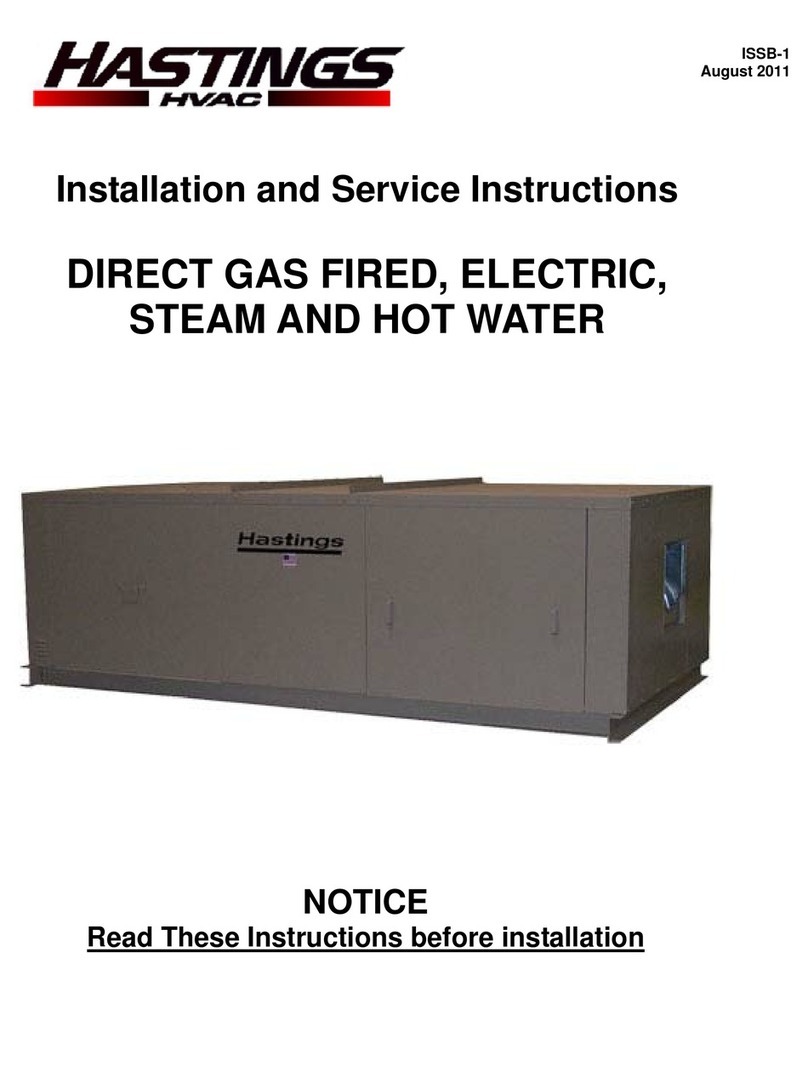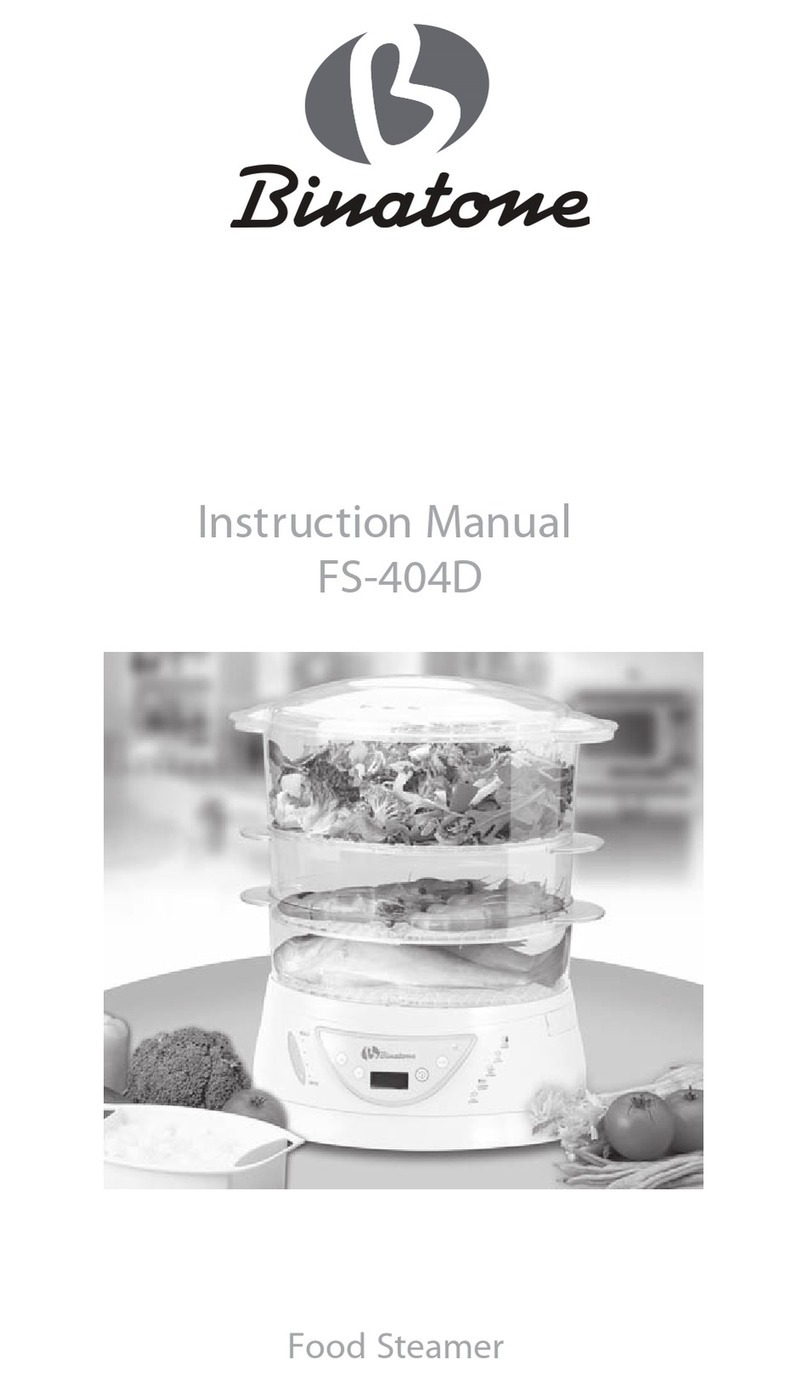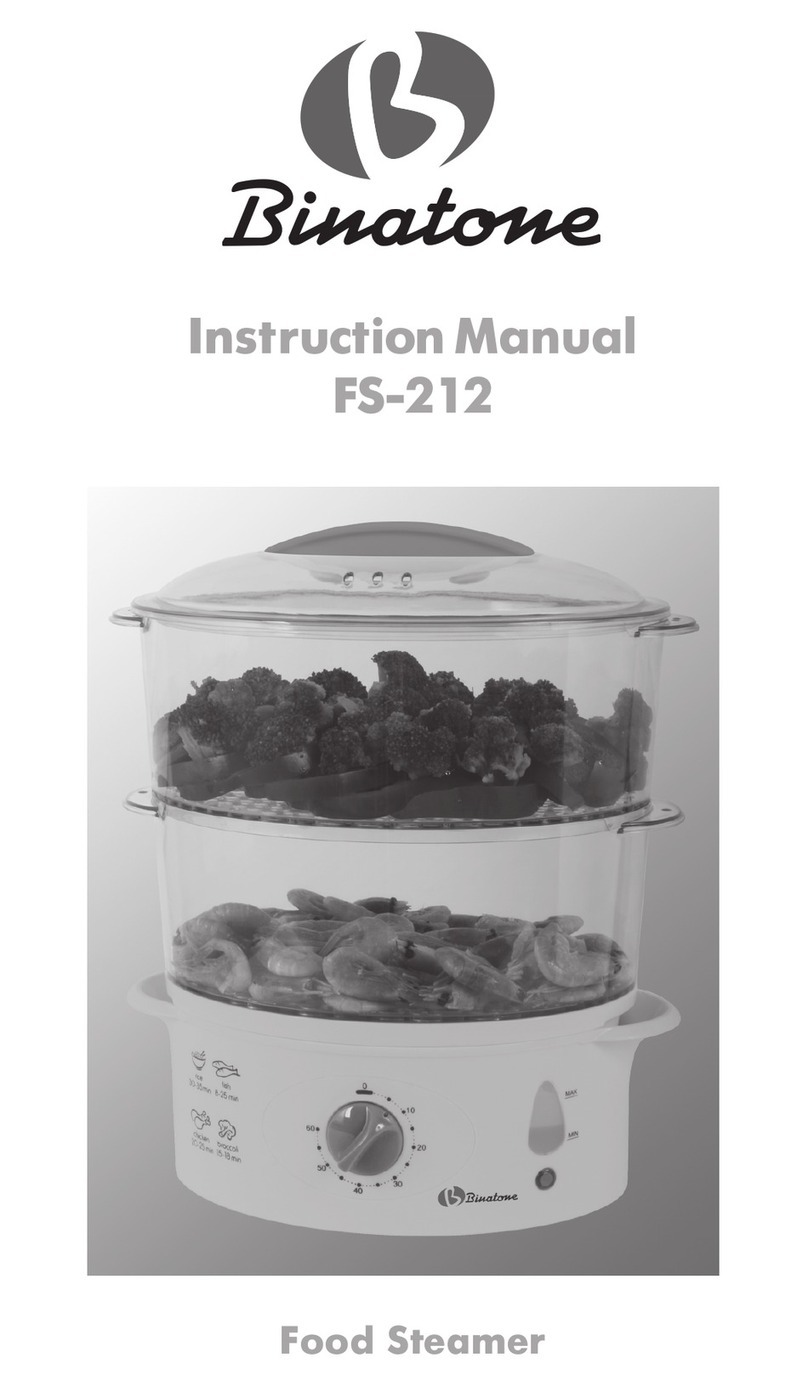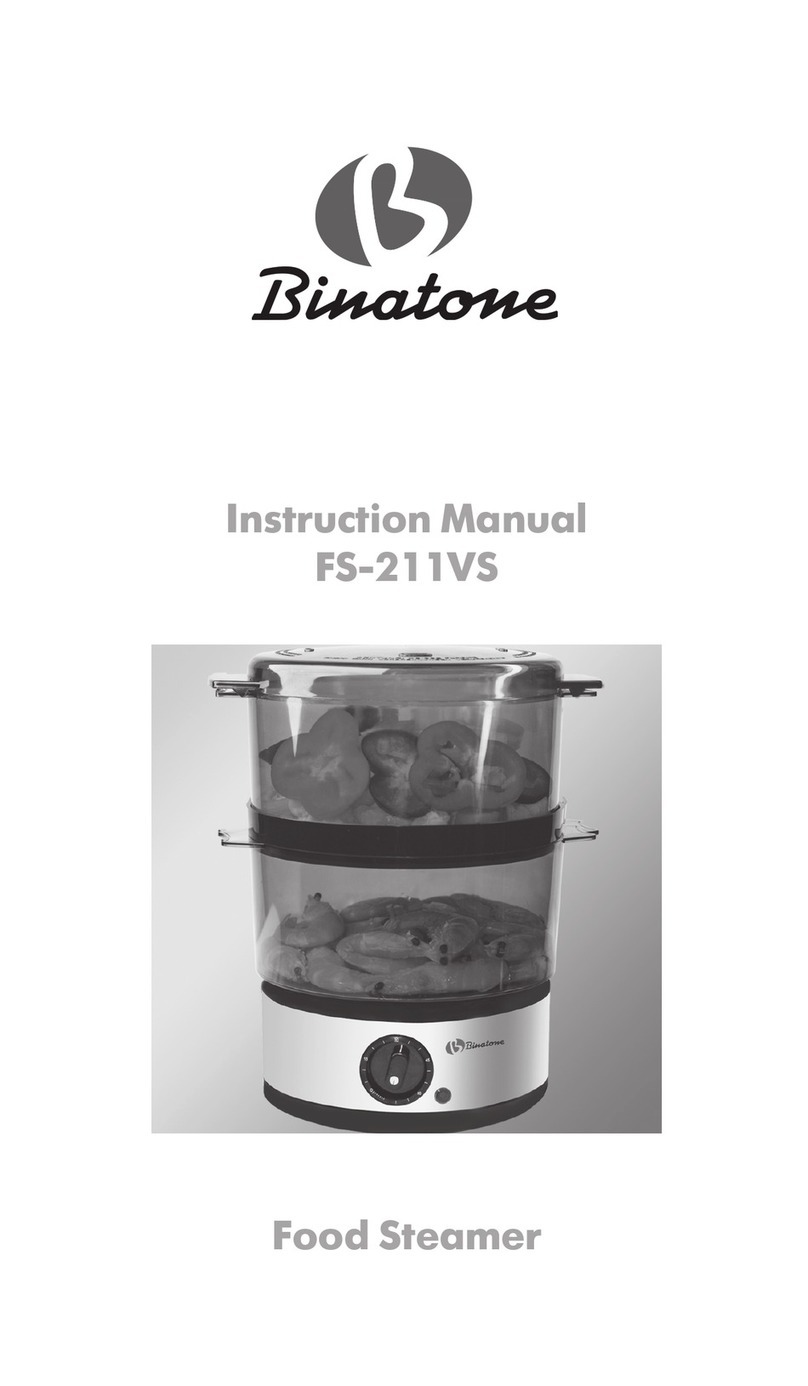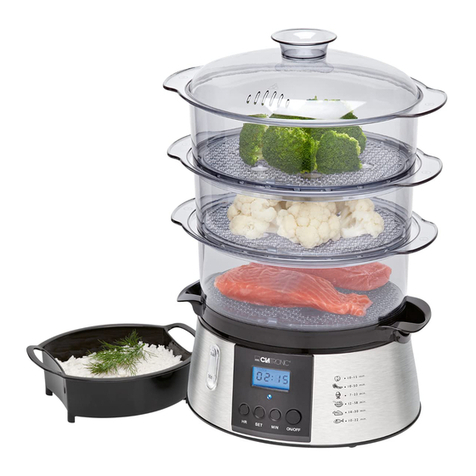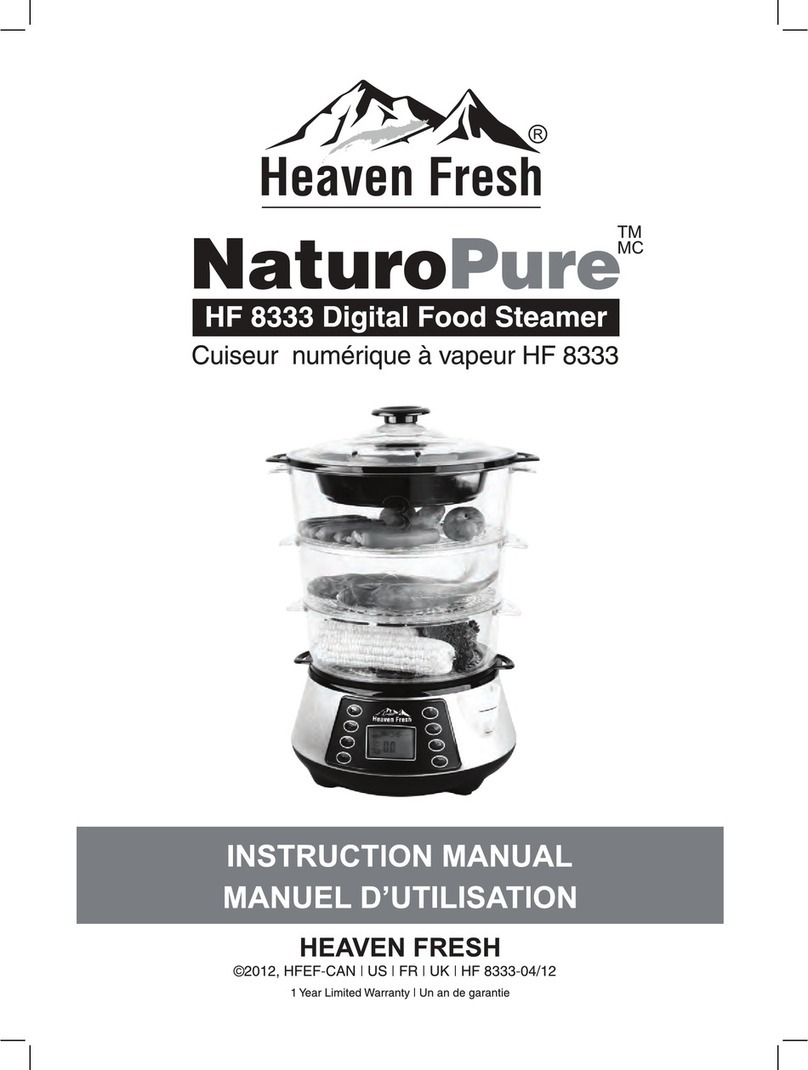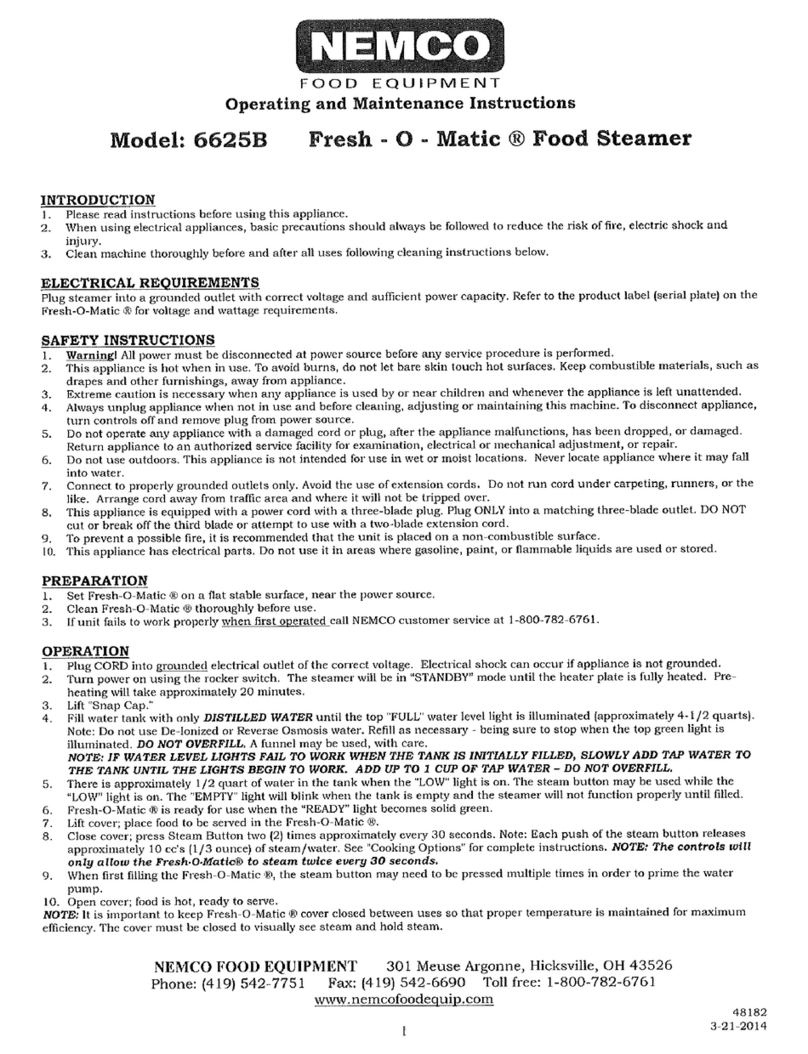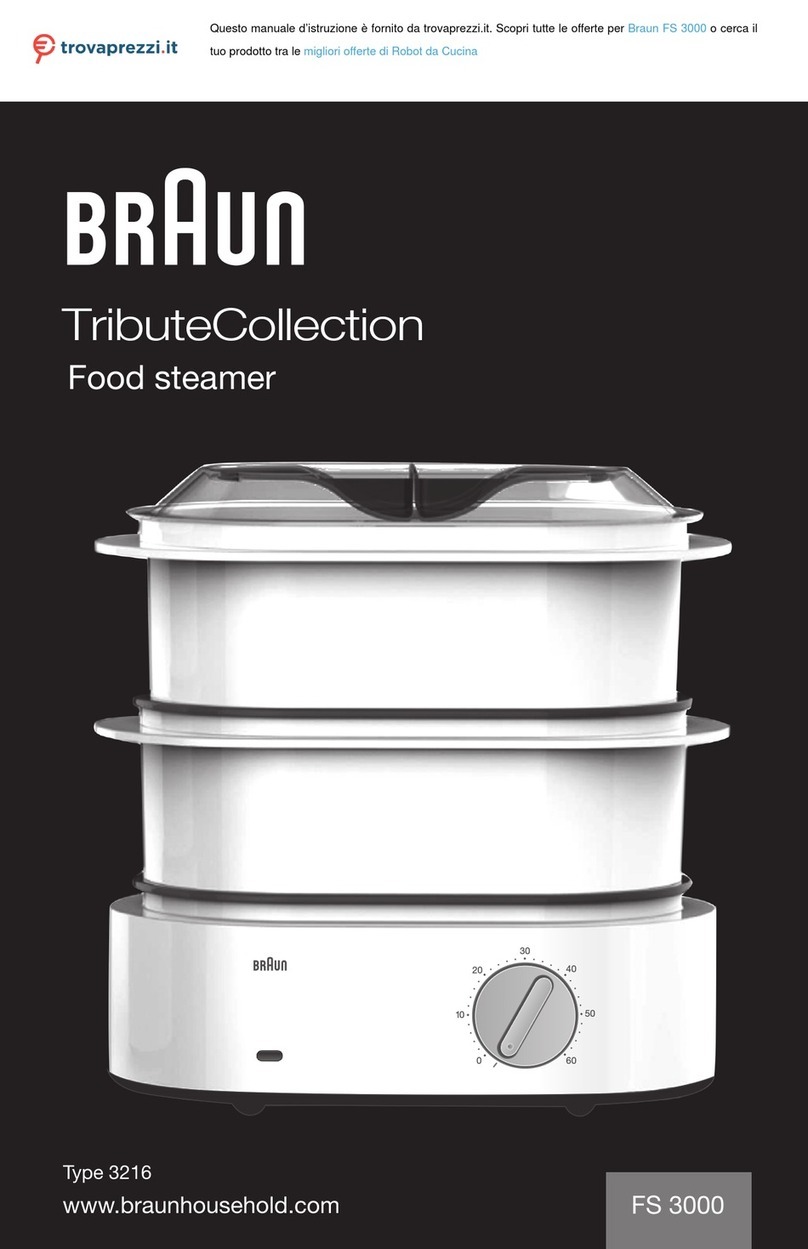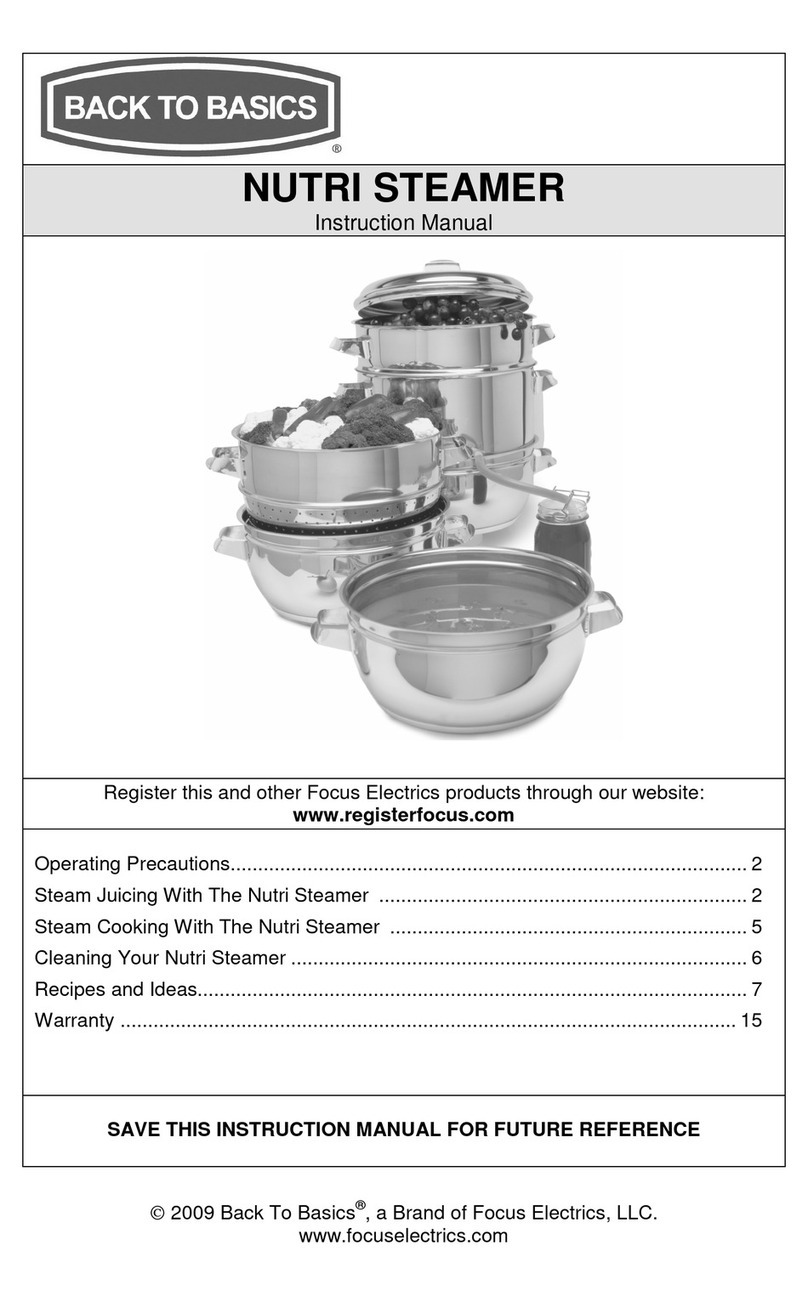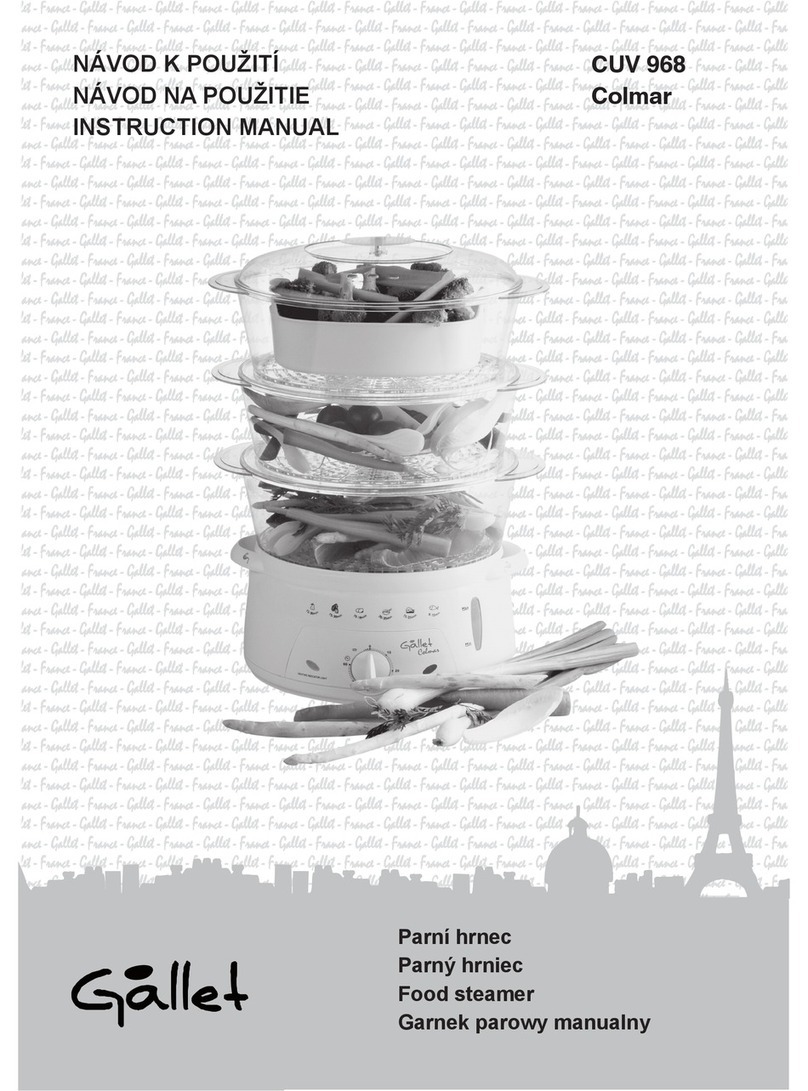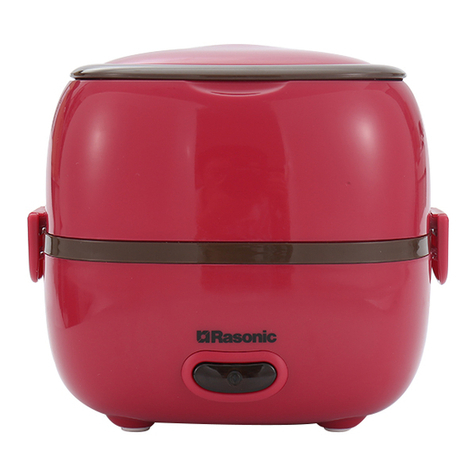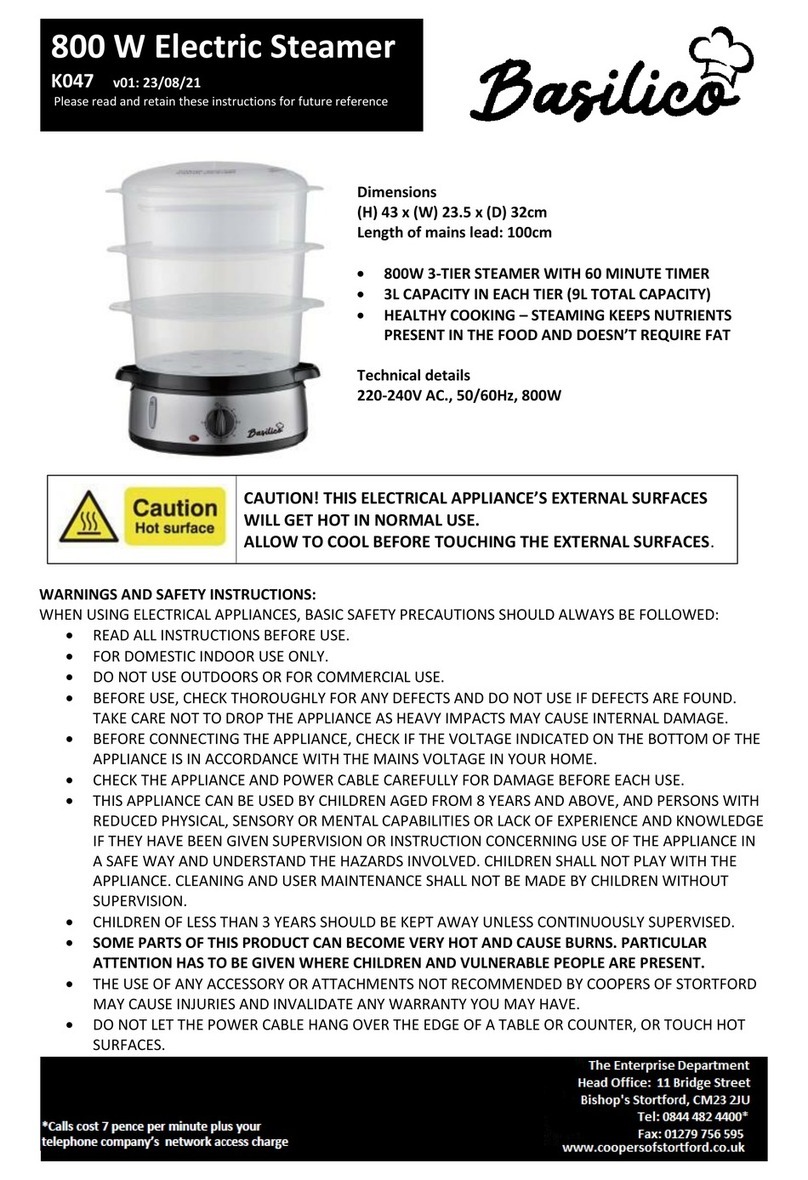7
ENGLISH
12.If water level is approaching the lowest level, refill the water tank
(14) via the water inlet (20).
13.When products in the upper container are ready, gently take that
basket off the food steamer and cover the remaining basket(s) with
the lid.
Attention: Steam can escape during operation. Be careful
and always use oven gloves when removing baskets
from the food steamer. Be sure the upper container is
covered with the lid.
14.When the cooking time has finished (19), the food steamer will
switch off automatically. You will hear an audible warning signal
and the indicator (18) lamp will go out.
Note: While cooking big dishes (chicken, for instance), you
can remove the bottom of the steam basket (8) to
increase the useful capacity of the food steamer (ref.
to Fig. B). For this purpose, push the bottom of the
steam container from below with your left hand and
hold the removable bottom from inside with your
right hand, simultaneously releasing the rim (9) from
one of the clamps of the steam container (7). Release
the rim (9) from the remaining three clamps (7) by
pushing it with the right hand thumb (Fig. B). To
reinstall the container bottom, place the rim (9) in
the steam container (7) clamp from one side. Follow
the same procedure and fix the bottom (8) in the
three remaining clamps (7) by pushing the container
bottom toward the center to allow the clamp (7) to
sit under the rim of the steam container (9).
Cooking
Food (with the exception of frozen vegetables) to be steam cooked
must be completely defrosted. Do not salt products before cooking
and do not use food dressings. Sauces, seasonings and food dress-
ings should be added after cooking. The tables presented below con-
tain recommendations on cooking different products provided that
these products are laid in one layer. If several containers are used,
the cooking time will increase since the same amount of vapor is em-
ployed for a bigger volume of products. If you put products in upper
containers, cooking time shall also be increased.
Do not forget: the further products are away from the heating ele-
ment, the longer the food cooking process will be. Cooking time should
be increased if products are layered in the basket. In this case, all
slices of the product must be either of equal size, or bigger slices must
be laid on the bottom.
To determine the exact cooking time and achieve the desired result,
you will need to experiment at first. If you are using a food steamer for
the first time, follow the guidelines written in the tables or tips on the
base (16), checking the degree of food readiness from time to time.
